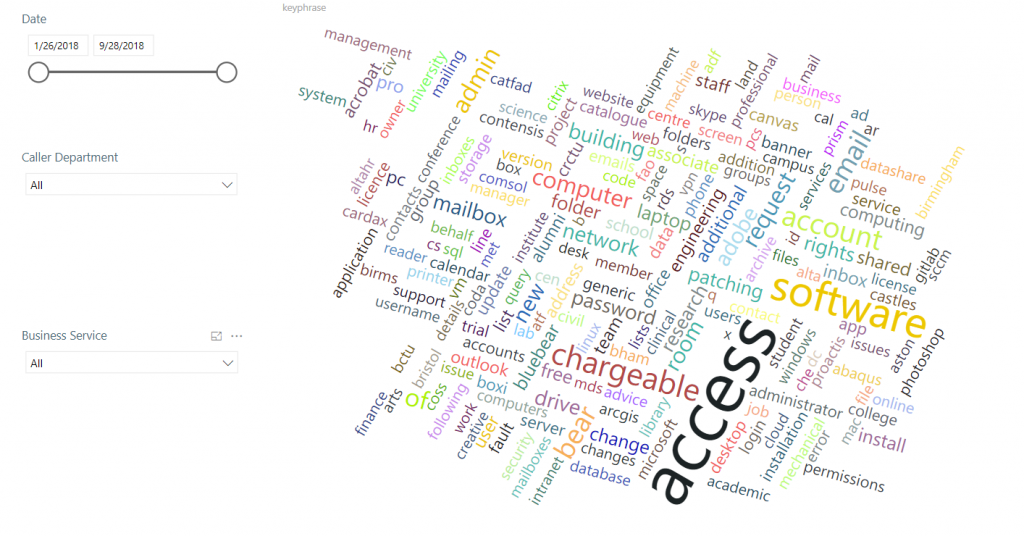The University processes huge amounts of unstructured text data throughout the academic year, including staff and study surveys, support requests to services desk, and much more. The volume of textual data captured is huge and increasing at a fast pace, and our ability to understand this data holistically in a timely manner to support business decision making is almost impossible.
Why is this important?
Feedback from users is essential for service and business improvement, if we can process and understand large amounts of textual feedback quickly, we can use this to drive business decisions and improve how we do things.
Using artificial intelligence, it is now possible to process large amounts of textual data and draw insights in minutes. These insights could involve drawing out the key phrases from the data to understand the areas of most concern, or even to understand the sentiment of the feedback in order to prioritise our responses to negative feedback first. There are many possibilities.
IT Service Desk – text analysis prototype
The IT Innovation team is working closely with the IT Services Desk to develop new methods for analysing large datasets. By utilising artificial intelligence we are able to processes thousands of IT support requests a second and catalogue them against dates and departments making the request. Furthermore, we can quickly identify the main talking points in each record, presenting these main talking point in a word cloud would enable us to identify the main request trends from different department much easier. The IT Service Desk processes hundreds of thousands of support requests every year. Due the volume of data it’s difficult to review these tickets holistically in order to build full picture of the support demands from across the University.

The aim of this prototype is to provide the IT Service Desk with an easy to use dashboard, powered by artificial intelligence, that allows them to interrogate large amount of support request textual data to understand the types of requests being made, the time of year those requests are made and the department making them. It is hoped that such insights could allow the design of proactive support measures in order to reduce the number of tickets and calls made to the Service Desk.
For example, if it’s identified that a department makes many requests to the service desk at a particular time of the year, every year, IT Services potentially could offer proactive support to those teams before problems arise.
The future
Whilst Professional Services has its big data challenges, it is hoped that the adoption and use of machine learning and artificial intelligence has the potential to enable us to meet these challenges head on. Some examples of future use of this technology might include:
- Text analysis of student and staff surveys to quickly understand and summarise key areas of concern so actions can be taken.
- Text sentiment analysis of wellbeing support requests to prioritise those in most need and identify students who could benefit from additional support.
- Text and sentiment analysis of marketing channels to understand how prospective students engage with us before applying, allowing us to better target them.
- Analysis of the key search phrases used on our websites to ensure people find what they need when they need it.
